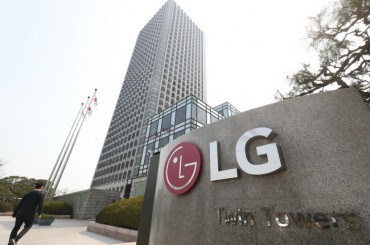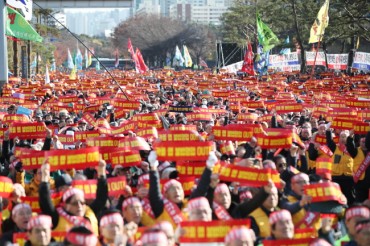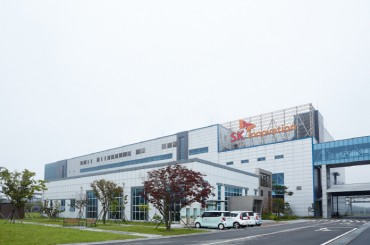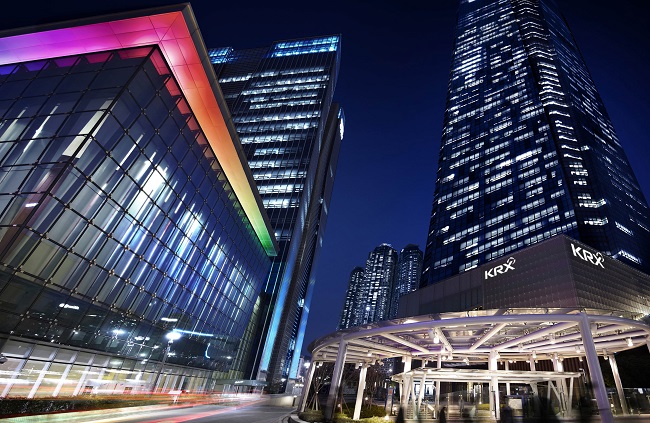
The Korea Exchange building in the southeastern port city of Busan in this photo provided by the bourse operator.
SEOUL, Dec. 29 (Korea Bizwire) — South Korean stocks ended the year 2022 sharply down, marking the first annual loss in four years on global monetary tightening and economic recession woes.
On Thursday, the last trading session of this year, the benchmark Korea Composite Stock Price Index (KOSPI) closed at 2,236.40 points, down 1.93 percent from a day earlier. This represented a 24.9 percent for all of this year.
The KOSPI got off to a strong start in this year’s first session on Jan. 3, higher at 2,988.77 points, but it had been on the downward path and hit the yearly low of 2,155.49 on Sept. 30. The index rebounded last month but turned south again.
This year’s fall came after the KOSPI posted a 7.7 percent annual gain in 2019, a 30.8 percent surge in 2020 and a 3.6 percent rise in 2021.
Trading volume has also dropped sharply amid bearish market sentiment.
The average daily trading volume on the KOSPI plunged 42.7 percent to about 590 million shares in 2022 from a year earlier, with daily transactions tumbling 41.6 percent to 9 trillion won (US$7.1 billion)
Market capitalization of the firms listed on the main bourse shrank 19.8 percent to 1,767 trillion won from the last session of 2021.
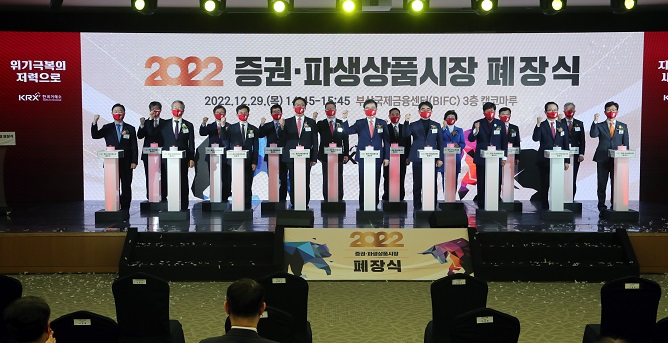
Executives of South Korean bourse operator Korea Exchange (KRX) and major financial firms celebrate the final session of 2022 in KRX’s Busan headquarters on Dec. 29, 2022. (Yonhap)
The Korea Exchange (KRX) attributed the KOSPI’s lackluster performance to aggressive monetary policy tightening by central banks in major countries, including the U.S. Federal Reserve, aimed at fighting runaway inflation driven by high energy prices and rebound in demand from years of pandemic.
In 2022, the KOSPI’s performance ranked 25th out of the benchmark stock indexes in 27 economies, including G-20 and other Asian countries.
Most sectors suffered a loss this year, with the tech and other cyclical stocks sharply losing ground.
In particular, the KOSPI’s bellwether Samsung Electronics plunged 29.37 percent on-year this year, with internet portal operator Naver plummeting 53.1 percent. Kakao, the operator of text message app Kakao Talk, also dived 52.8 percent.
Cyclical stocks, such as steel and energy, also suffered losses amid soaring commodity prices.
The secondary tech-heavy KOSDAQ also logged its first annual loss in three years.
In 2022, the KOSDAQ closed at 679.29 points on Thursday, down 34.3 percent from 2021. The plunge compared with a 44.6 percent rise in 2020 and a 6.8 percent increase in 2021.
(Yonhap)




